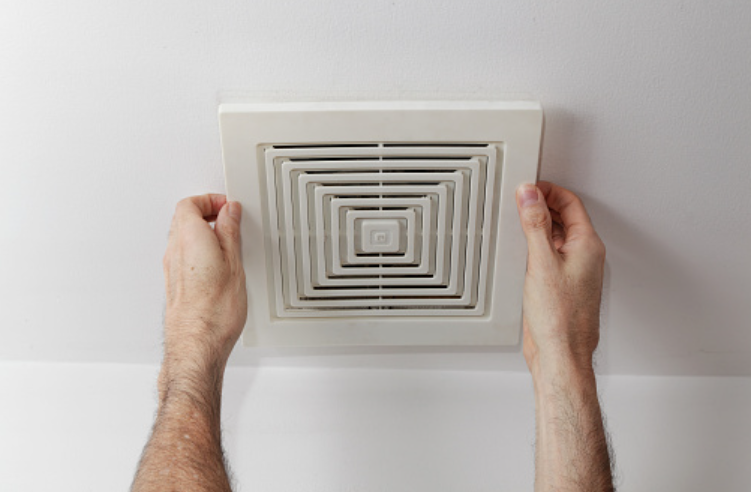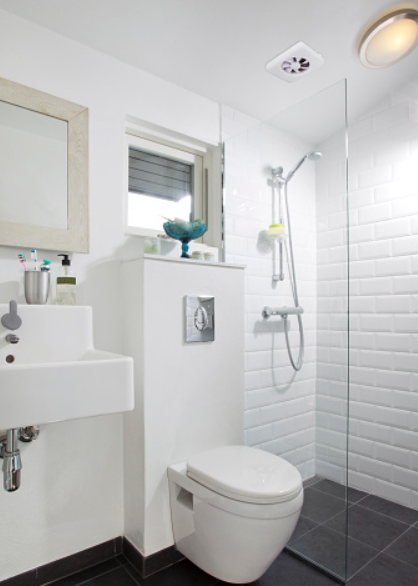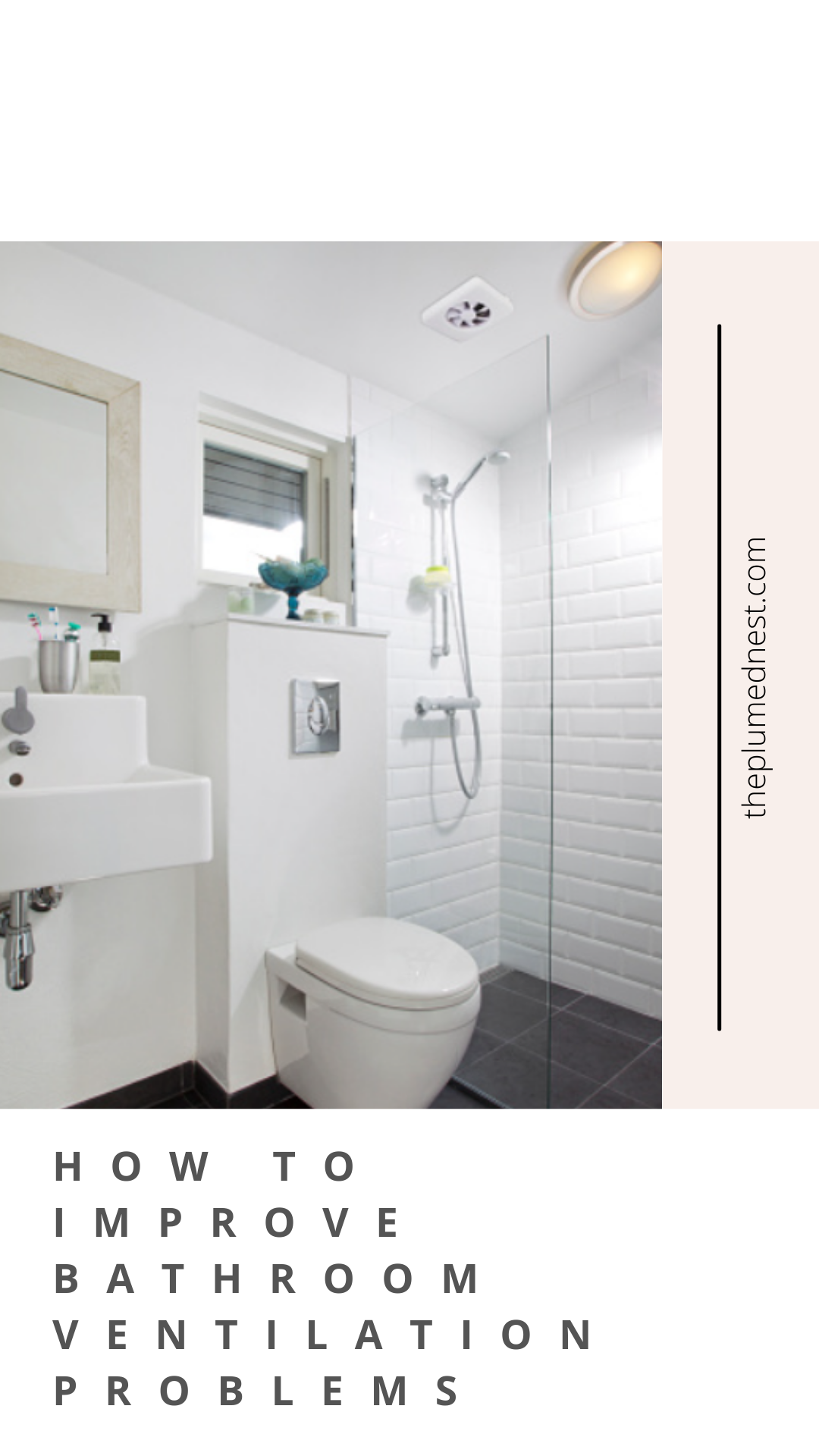Proper ventilation is crucial in commercial bathrooms due to multiple usages every day. Showers, flushing toilets, and handwashing all create humidity in the room which can cause discomfort for the users. Not only will it cause discomfort, but trapped moisture can seep into the walls, ceiling, and floor, leading to mold and bacterial growth.
Installing ventilation fans in public restrooms also improves indoor air quality and removes odors. Although the installation process may be challenging for some commercial spaces, the benefits of bathroom ventilation can significantly outweigh any disadvantages.
Table of Contents
Indications of Poor Bathroom Ventilation

The absence of ventilation fans in your building’s bathroom can encourage mold and mildew growth due to indoor air pollution. Mold and mildew are hazardous indoor air pollutants because they thrive in moisture-rich conditions.
Mold is a severe health concern that can cause various respiratory issues and allergic reactions. It also damages building materials such as gypsum and wood board.
Although a plumbing issue may be the source of mold in your bathroom, the smudgy spots on the walls or ceilings usually suggest poor ventilation and air moisture. Even if you can’t see them, their smell indicates mold growth.
How to Ventilate Your Bathroom
Now that you’re aware of the disadvantages of poor ventilation, here are some expert tips and methods that you can use to improve the ventilation in your bathroom.
- Install a Recirculating Fan in a Half-Bath: The recirculating fan does not release the vent outside because it purifies the air inside. Since there is no shower to fill the area with moisture, a circulating bathtub fan would be a viable alternative for a half-bath.
- Vent Beneath the Floor: Installing a duct network beneath the floor is an excellent solution for bathrooms located underneath the stairs or if rooftop ventilation is not possible. Place the fan higher on the wall to effectively capture moisture. Choose PVC or metal ducts and add a powerful fan to prevent natural convection and successfully vent the airflow.
- Install Commercial Ductwork: Installing commercial ductwork is ideal for smaller flats with high ceilings. Bathroom ducting could connect into a single line of sizeable commercial ductwork instead of multiple long duct lines that run outside. Making this industrial-scale ducting visible in some restaurants and retail businesses can create a unique visual feature.
- Utilize an Inline Fan to Reduce the Noise: It needs more blowing force to expel air to the exterior as a duct line gets longer or has more elbows for altering directions. Fans with more horsepower typically make more noise. However, by placing an inline fan along the duct that runs along your lounge room, you can reduce noise.
- Construct a Soffit to Hide Ductwork: Constructing a soffit is an excellent way of concealing your bathroom’s duct fan placed along the internal wall.
You or your maintenance personnel can properly upkeep the ductwork system for your building by installing drywall access panels with exposed flange. They provide a convenient entry point for personnel to access the system’s vital components to inspect, repair, or replace some parts. Ensure to collaborate with your contractor to optimize their installation.
Dealing with Building Code and Bathroom Ventilation

Ventilation is vital to indoor bathrooms to help eliminate smells and unwanted moisture. We all understand how much dampness a warm shower can generate. For instance, warm showers can create enough steam to cloud mirrors and make the room more chilly or hot, depending on the weather outside.
Due to the benefits of ventilation, building regulations now require bathrooms to have an exhaust system or an adjustable window. The window ventilation alternative is a bare minimum that is neither functional nor dependable. It’s risky to rely on someone else to open one to release extra moisture, especially in cold conditions. A vent fan will always be more effective in removing water.
Basic Bath Fan Guidelines

When looking for an exhaust fan or ventilation system for your bathroom, there are essential factors that you need to consider to ensure a successful purchase. By following these buying considerations, you are sure to purchase an ideal ventilation device to address your needs.
1. Consider Unique Features
Using a bath fan with a light eliminates the requirement for a distinct ceiling fixture. While you’re producing much humidity, such as when taking a long bath or using a jacuzzi tub, a ventilator with variable speed control can help.
You can get a bath fan with a humidity sensor, which automatically turns on the fan when it detects a specified humidity level. It is an excellent alternative if you’re renting an apartment and not sure if you can use the fan properly. The idea is that not every fan could be equal. Choosing specific characteristics can help you deal with difficult ventilation situations.
2. Purchase the Suitable Fan
You can determine the size capacity of exhaust fans by their airflow, which you can calculate in cubic feet per minute. For each square foot of surface area in your bathroom, the rule is that you’ll need one cubic foot per minute. Better-designed fans are quieter than cheaper models. Instead of 3 or 4, look for a rating of about 1.
3. Maintain as Many Short and Straight Duct Runs as Feasible
Longer duct lines cause the vent fan to exert more effort to exhaust and circulate the air, leading to higher energy costs. When installing the ductwork, talk to the plumber or contractor to avoid running long lines and several elbows to ensure smooth and easy airflow.
4. Use Metal or PVC for Ductwork
Avoid low-cost vents when choosing the ductwork material and instead choose metal for durability and PVC for long-term versatility and functionality. Sheet metal ducts usually come in aluminum or galvanized steel which are mold-resistant and non-porous. On the other hand, PVC is a low-cost option that is durable and prone to corrosion or denting, making it an ideal ventilation material.
The Takeaway
Avoid low-cost vents when choosing the ductwork material and instead choose metal for durability and PVC for long-term versatility and functionality. Sheet metal ducts usually come in aluminum or galvanized steel which are mold-resistant and non-porous. On the other hand, PVC is a low-cost option that is durable and prone to corrosion or denting, making it an ideal ventilation material.
You must never compromise and suffer low quality even in your bathroom spaces. An overlooked detail could cost you more money in repairs if you don’t have any measures to prevent them. Having suitable and well-functioning bathroom ventilation will protect your occupants and building structure from excess moisture creating mold conditions. Work with an expert for additional guidance.
